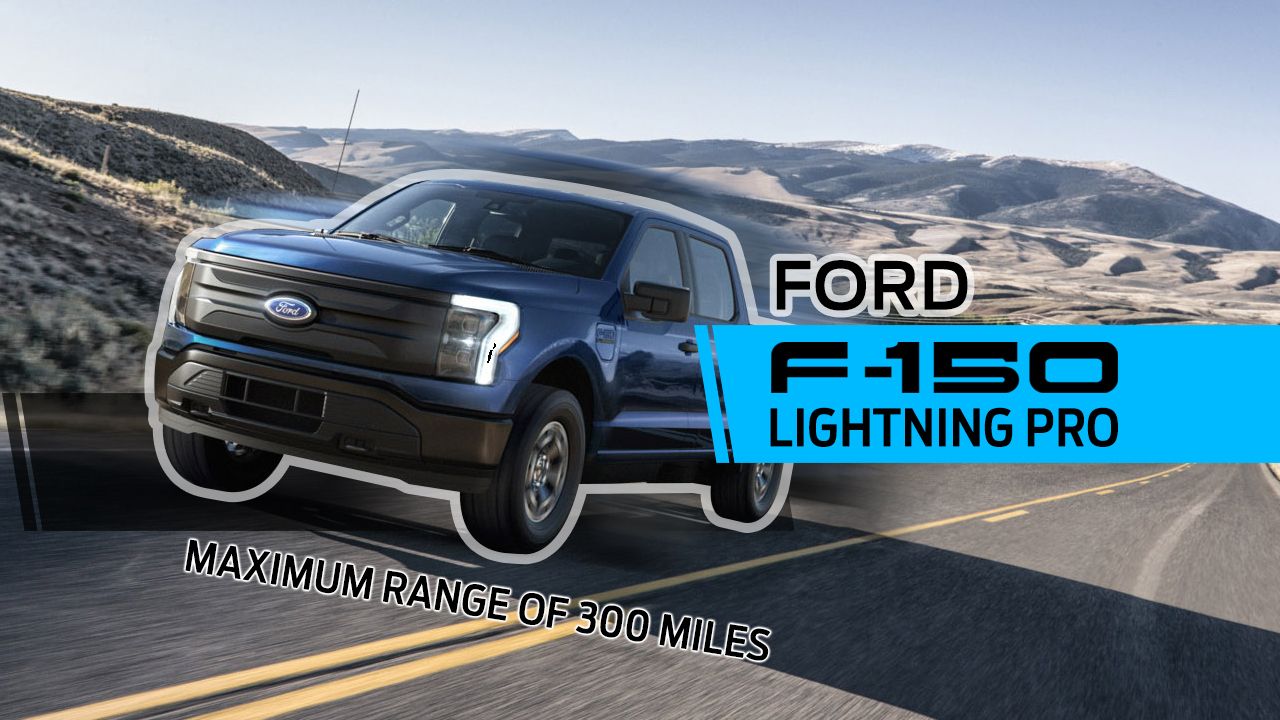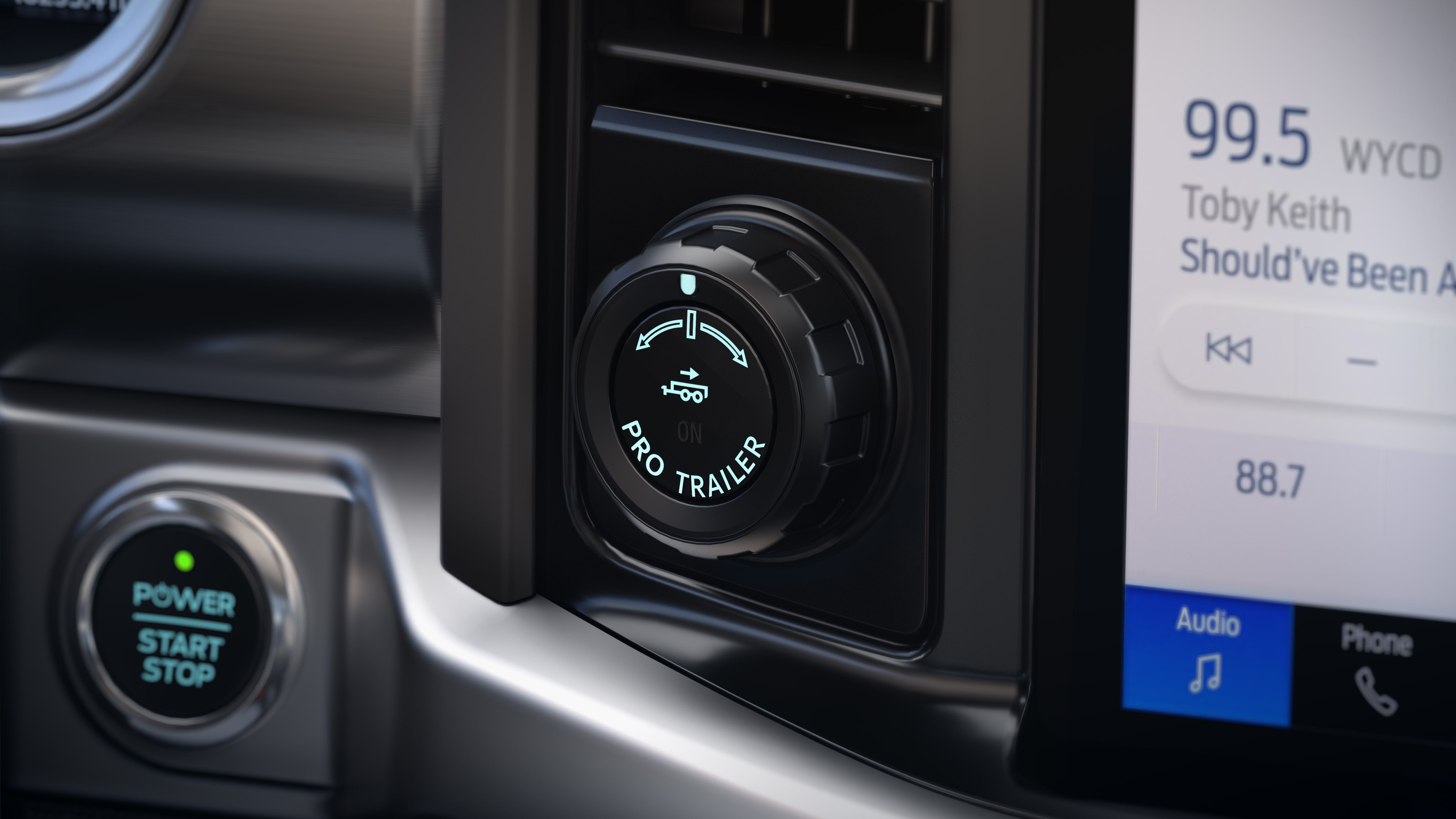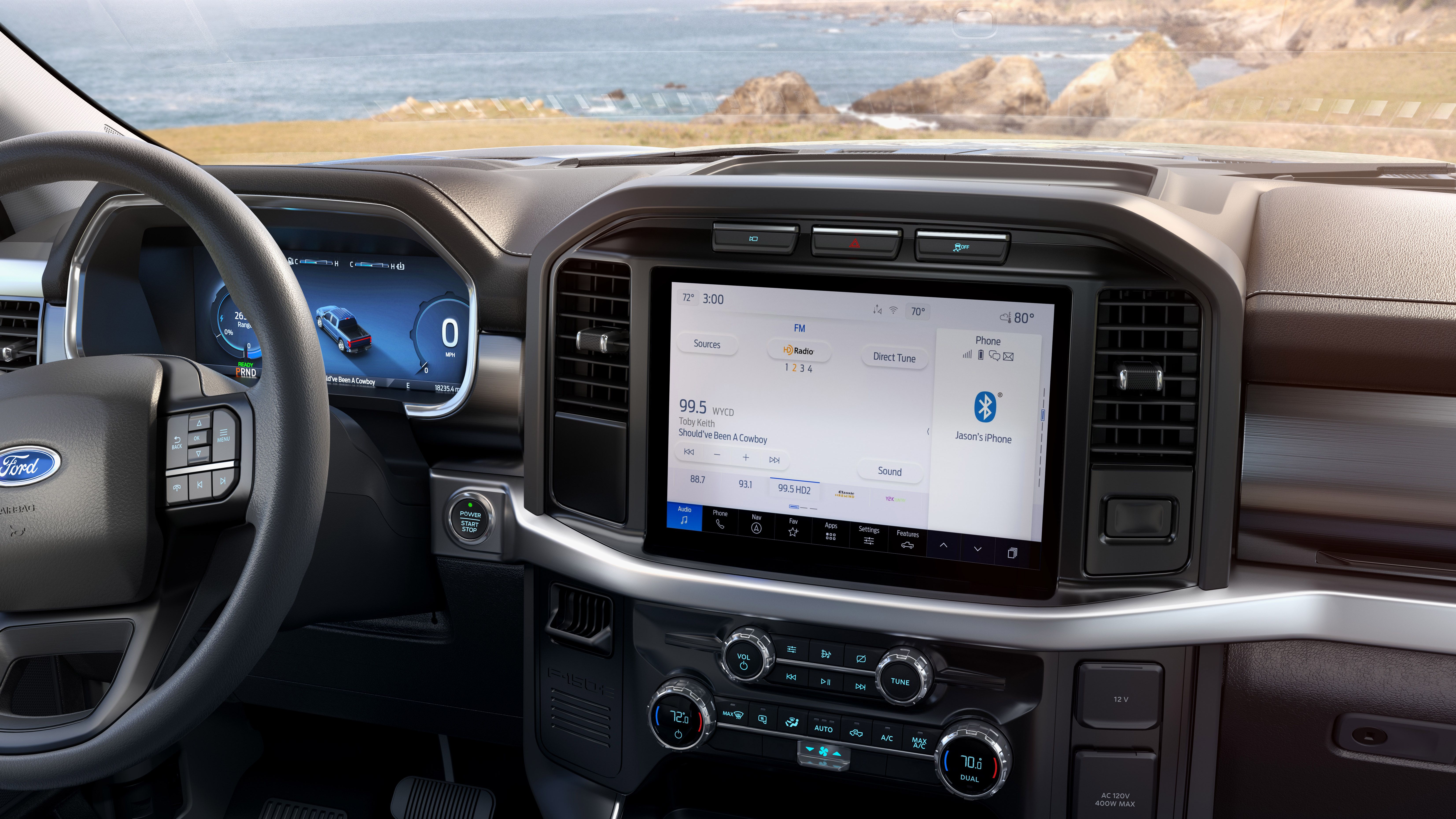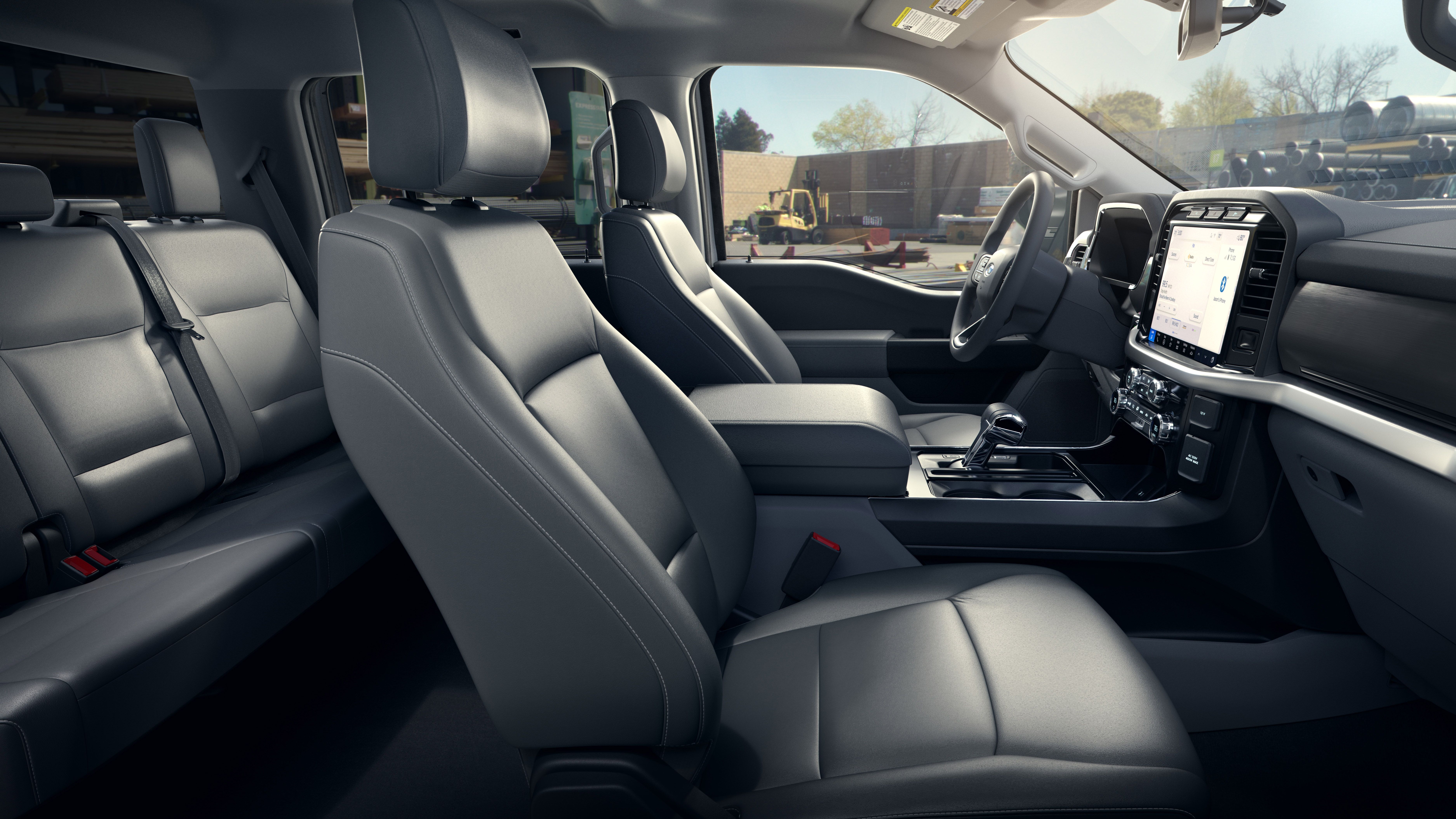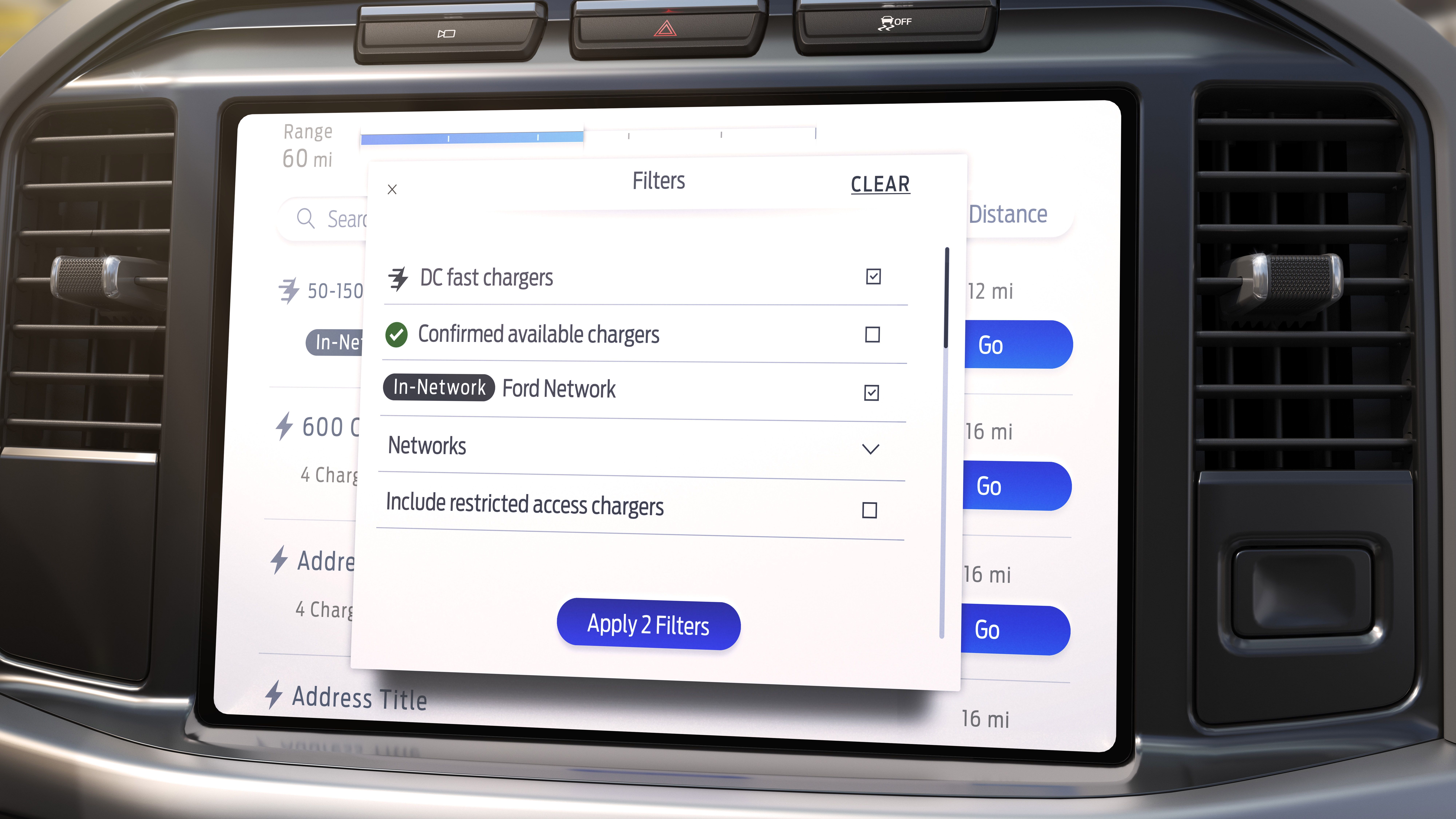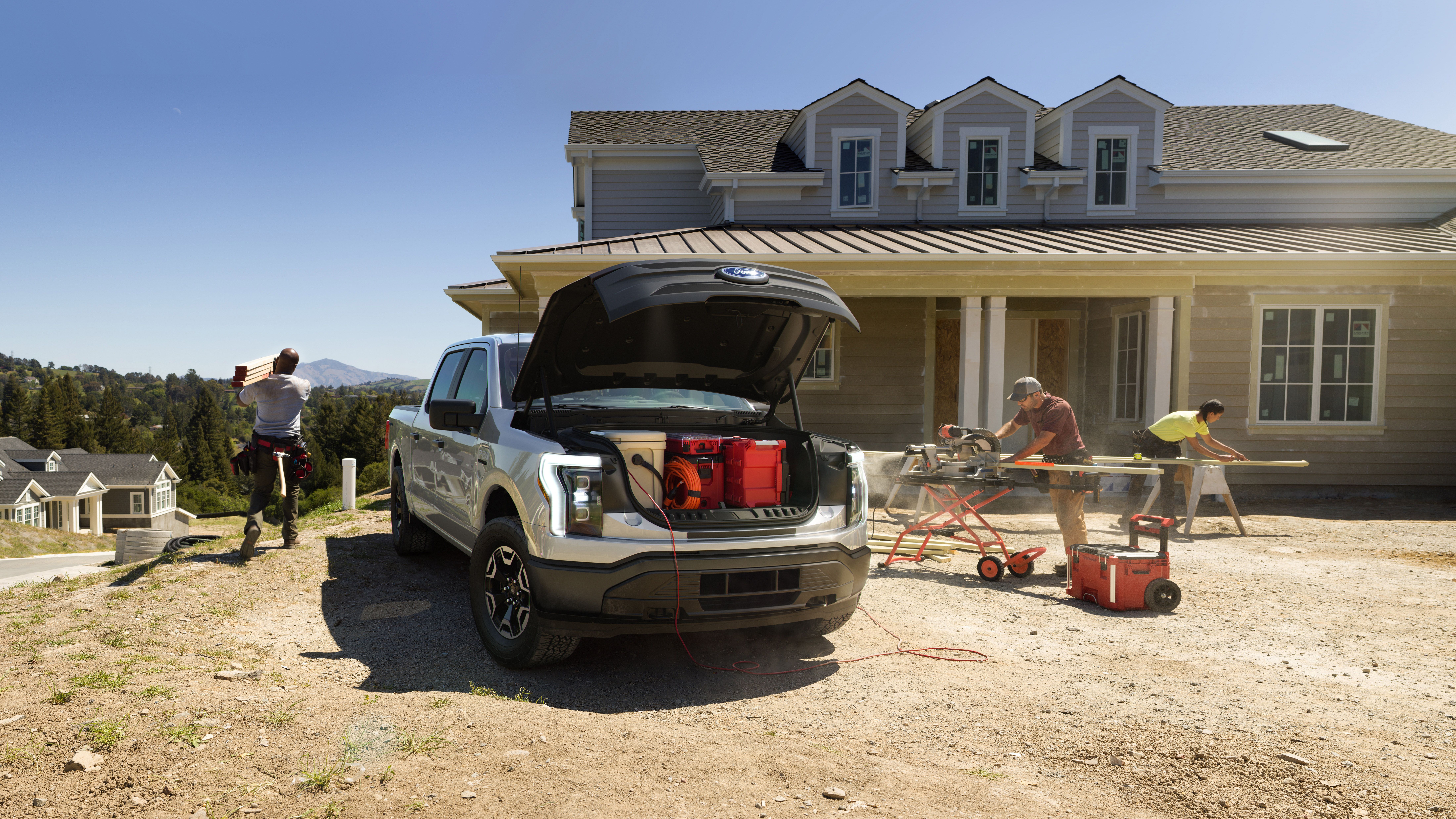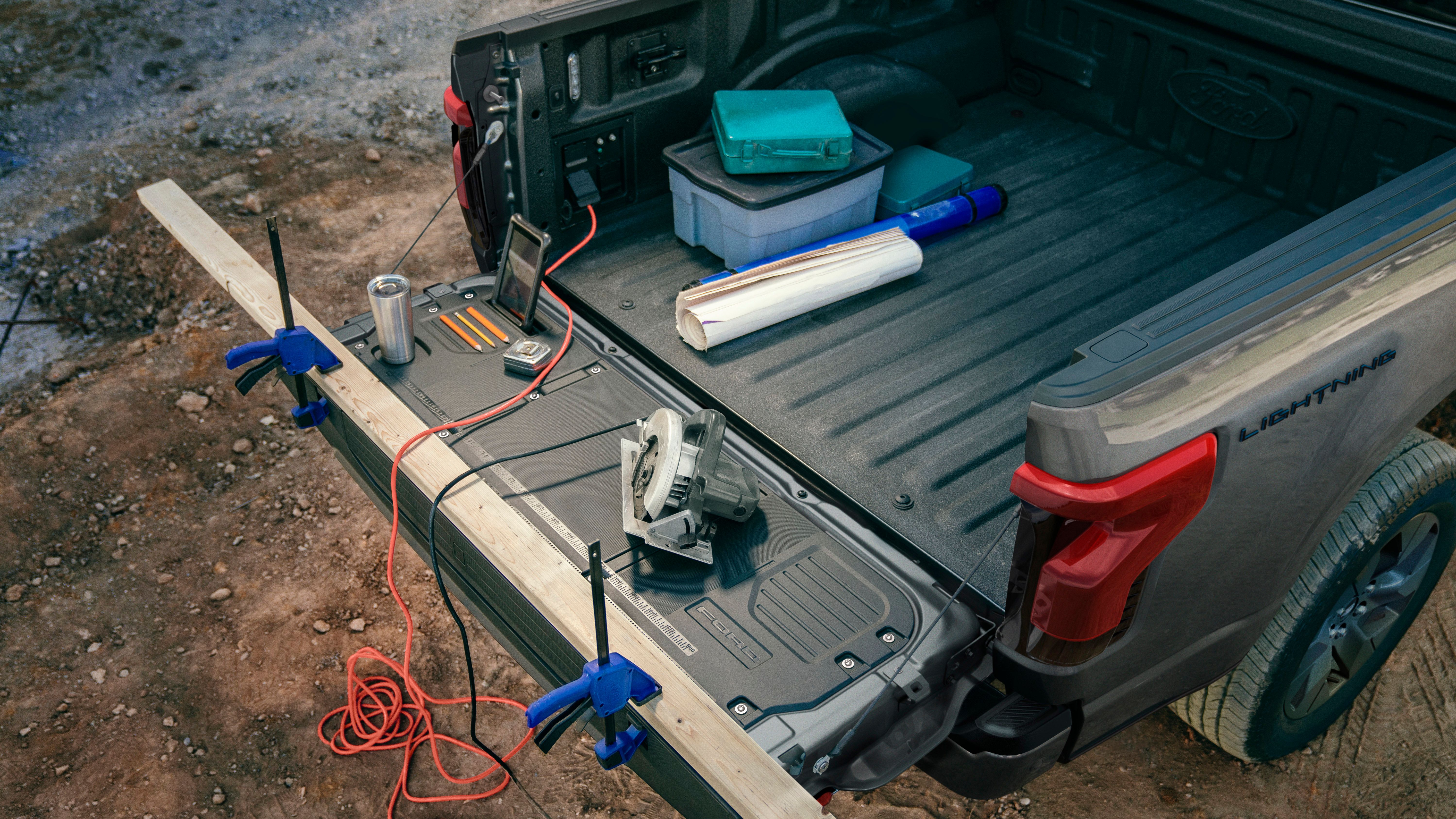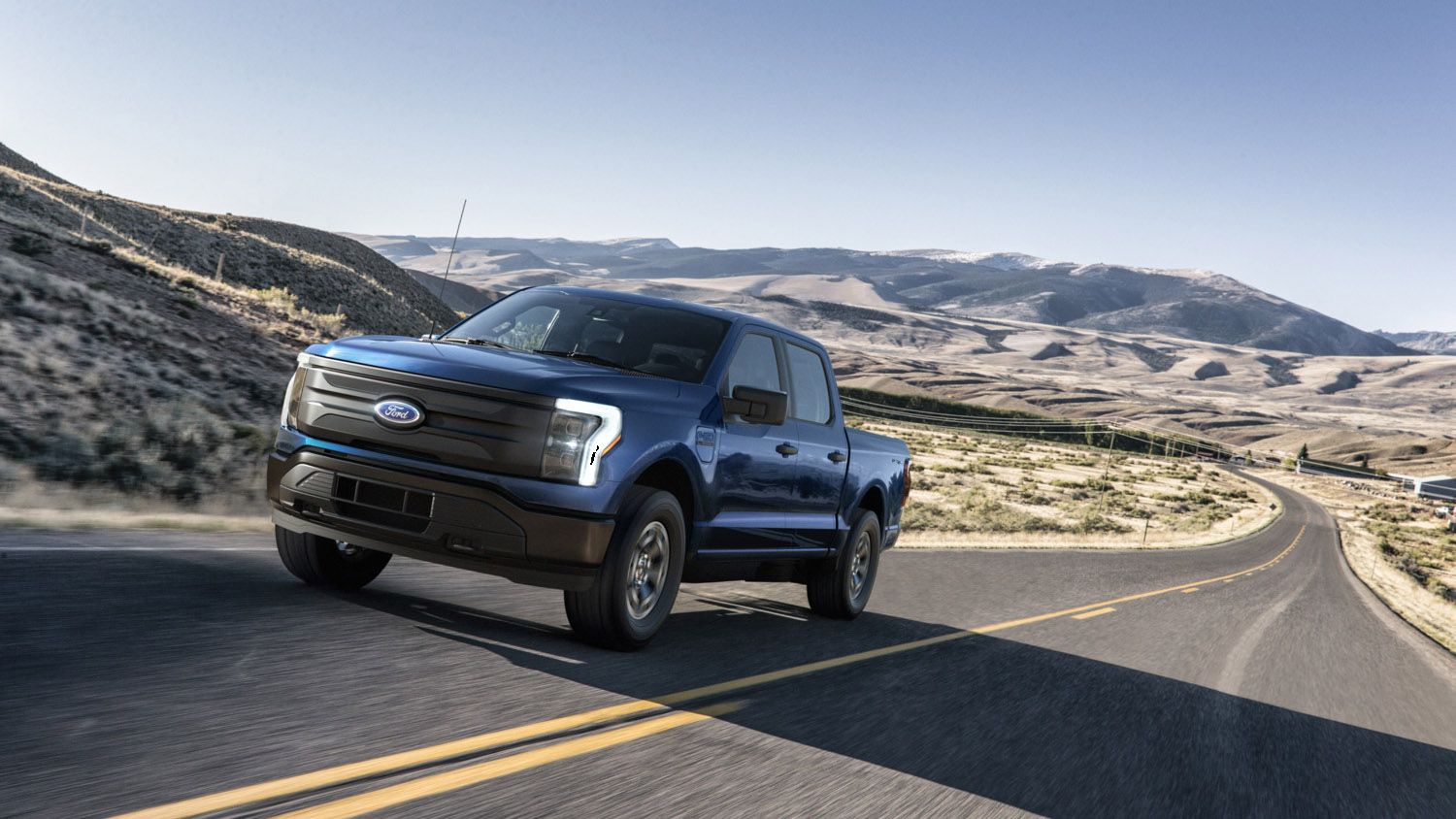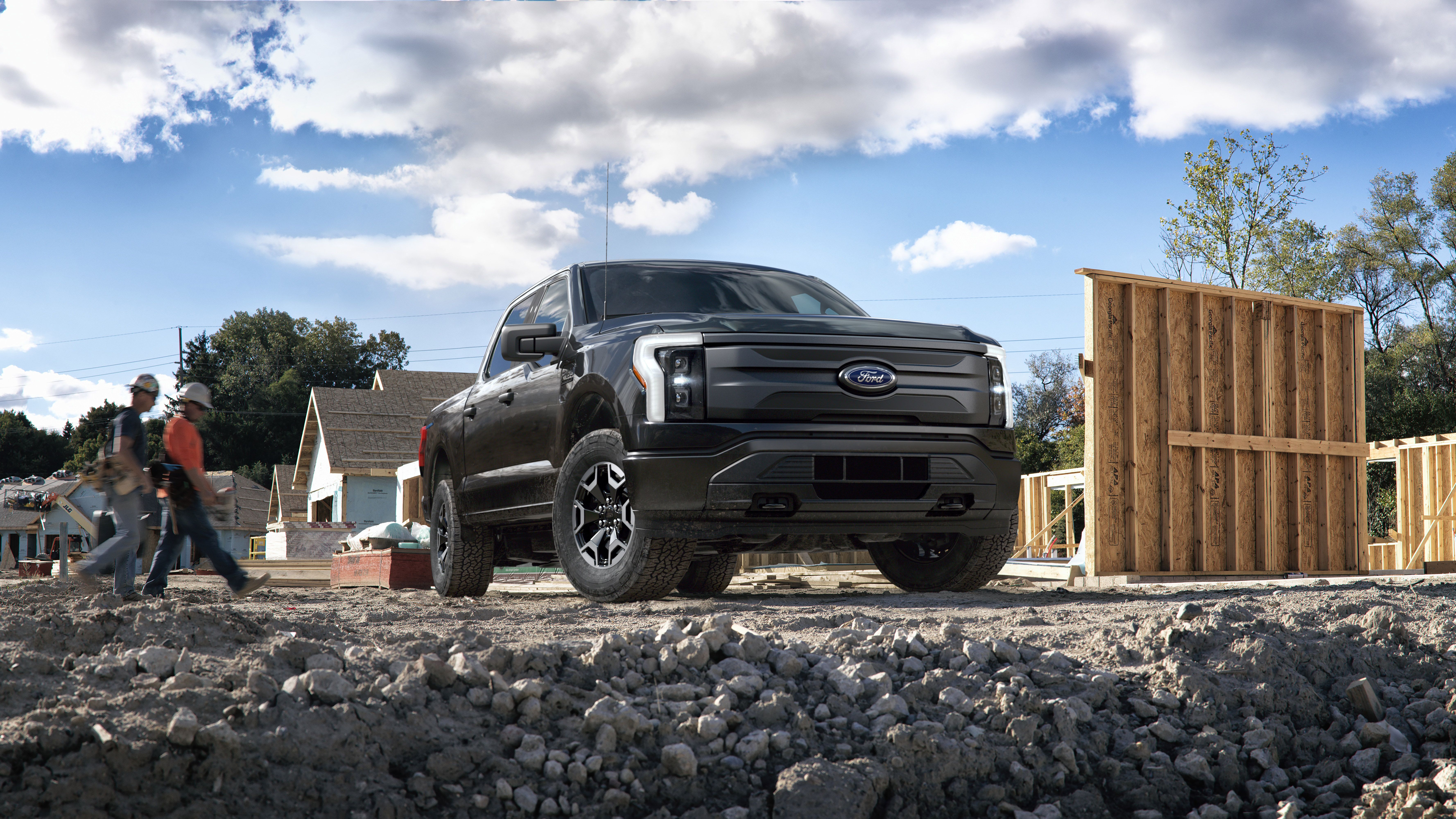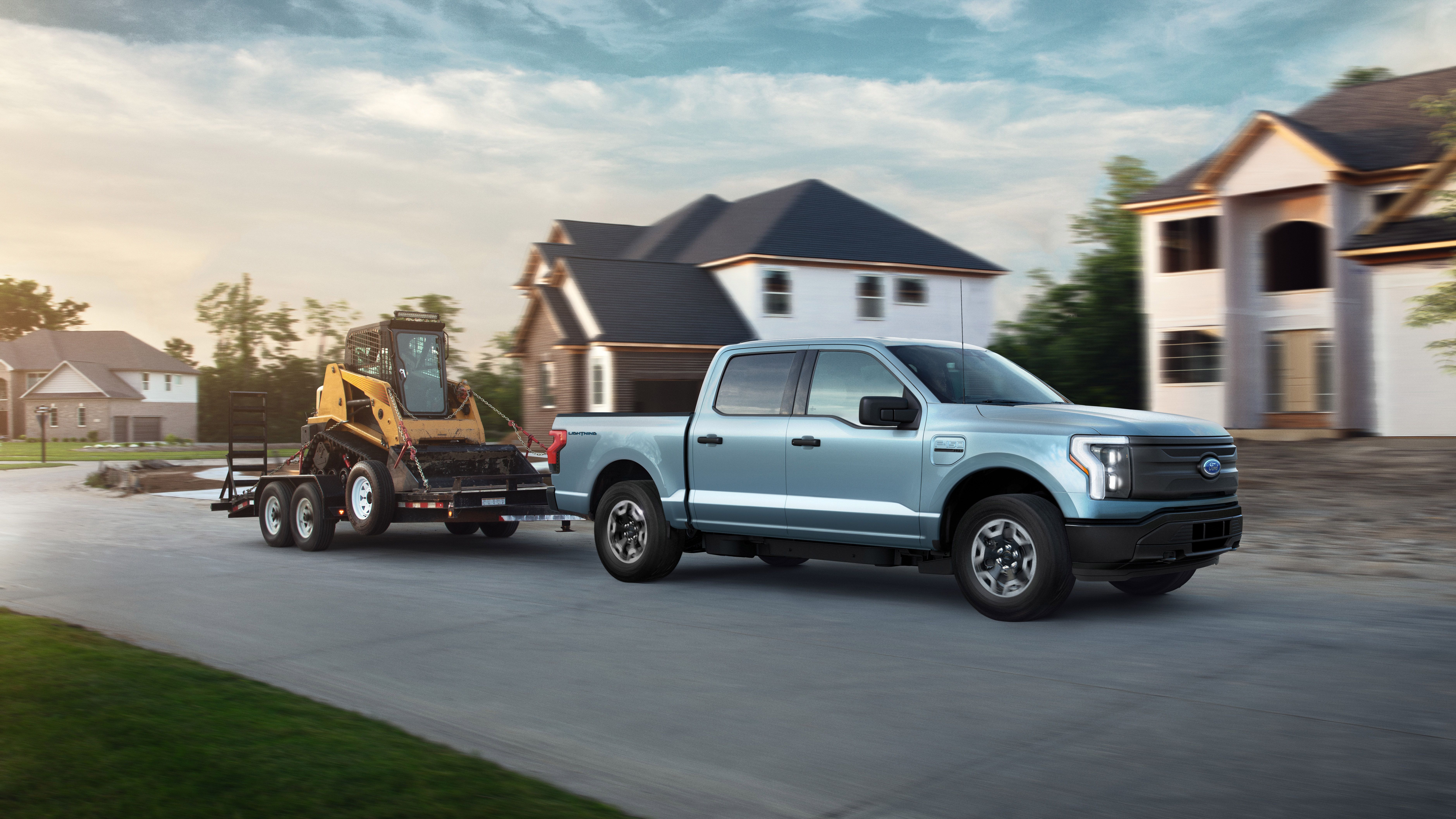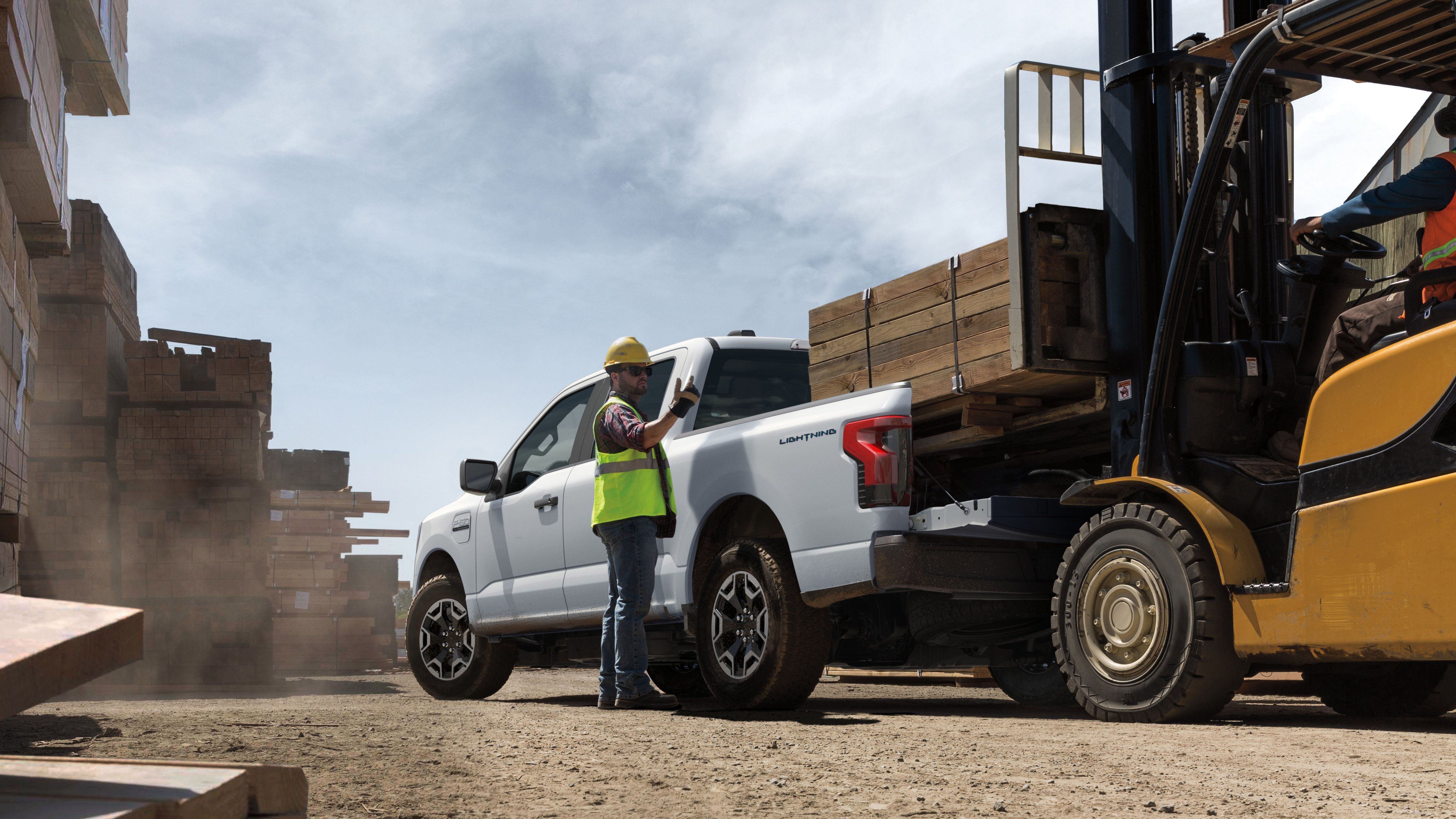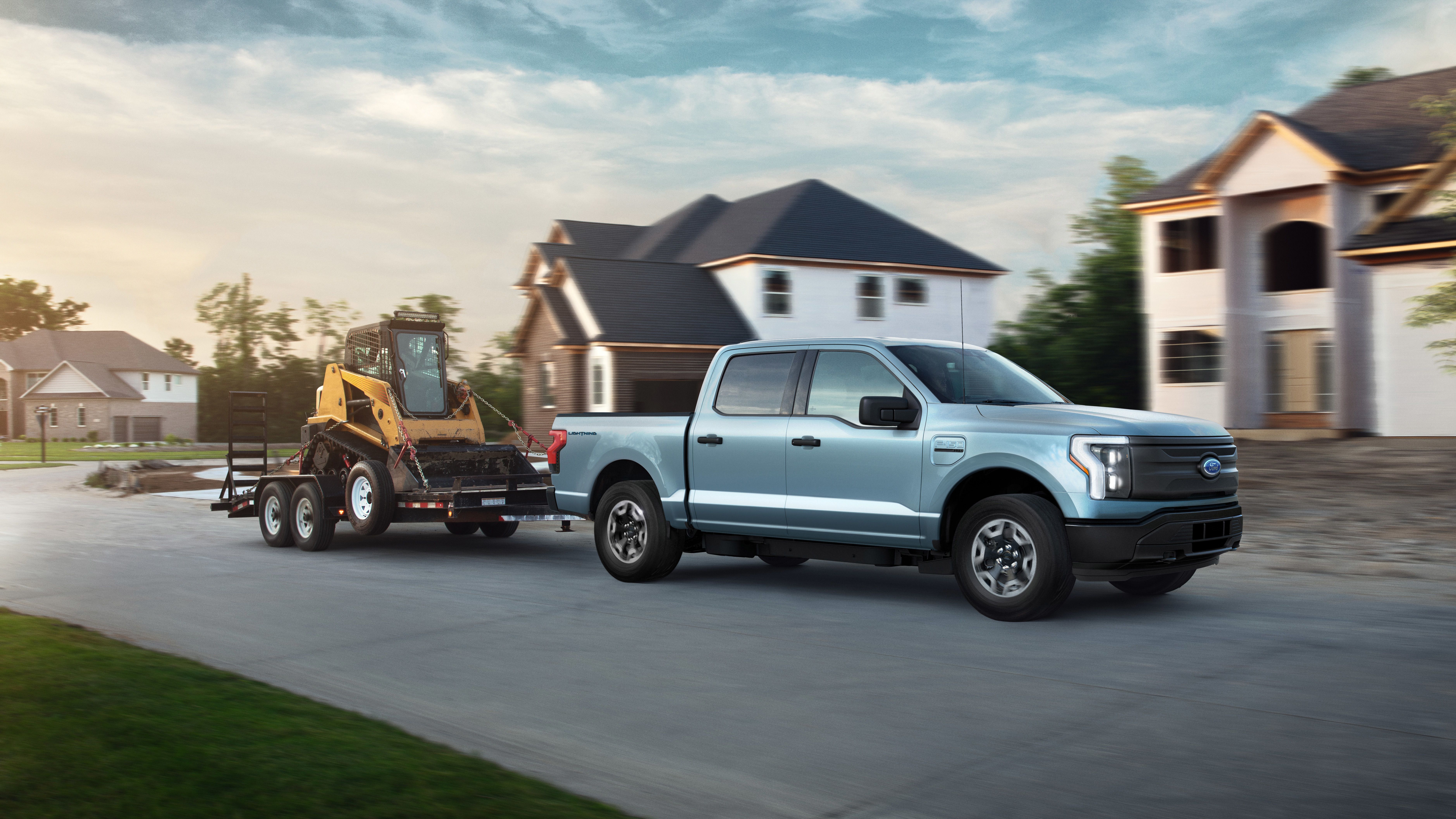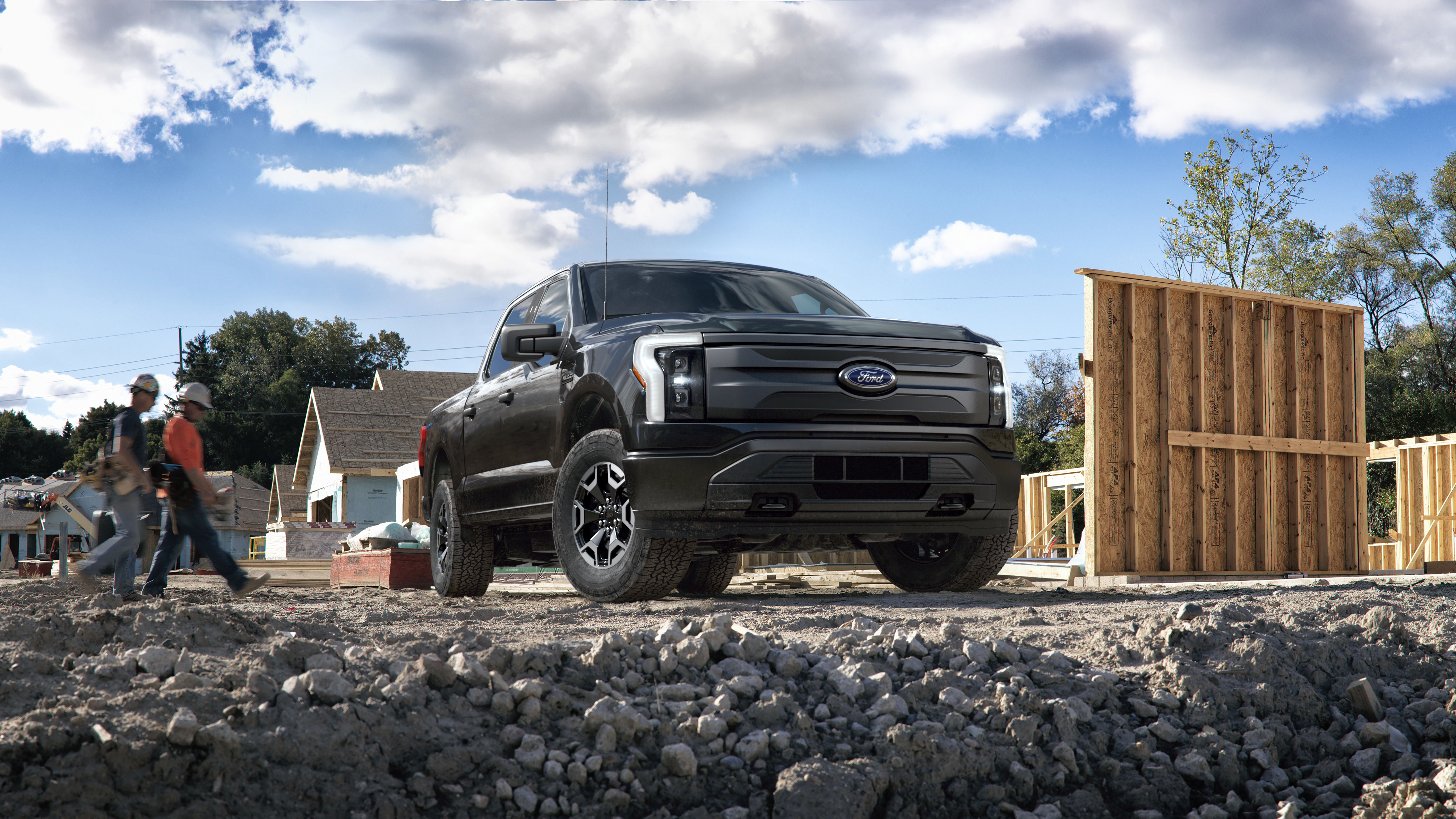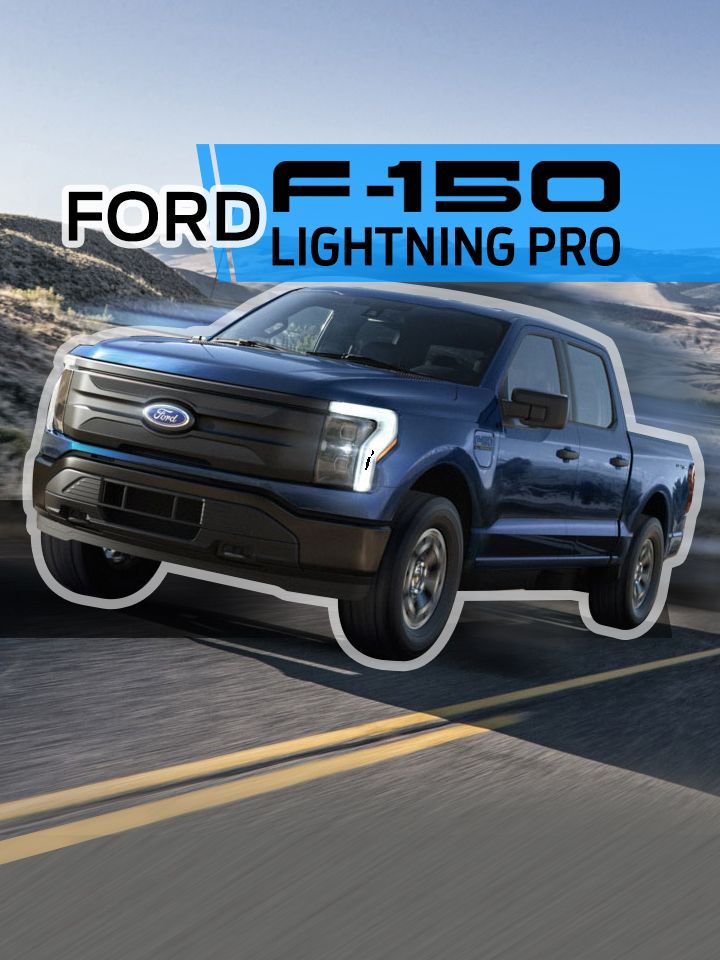Ford launched the F-150 Lightning EV last week and it mostly drew positive responses. The talking point was the sub-$40,000 price for the commercial variant, which would result in being cheaper than the standard F-150 after factoring in the federal tax credits and state incentives. The automaker had not revealed the specs for it then, but we do have them.
The company has coined this commercial trim as the F-150 Lightning Pro. As a sub-$40,000 EV, it looks alright on paper. But, look at it as a work truck – which it is – and you will be disappointed.
2022 Ford F-150 Lightning Pro
- Make: Array
- Model: 2022 Ford F-150 Lightning Pro
- [do not use] Vehicle Model: Array
How Much Range Does The F-150 Lightning Pro Offer?
Just like the standard F-150 Lightning, the Pro will also be offered with two different battery packs. The Standard Range (SR) pack will offer 230 miles of range whereas the Extended Range (ER) pack will offer 300 miles. These are EPA-estimated targets for now, but could very well be the actual EPA-estimated figures too. The real-world figures, however, will be much less than this, and if you hitch a tow or use the Pro Power Onboard, the range is going to dip drastically low. We’ll get to it in a bit. Chevy announced that the Silverado EV will have a range of 400 miles. It is still some time away, but seeing these figures, it looks like folks not looking for an immediate purchase would wait for it to arrive.
What Powers The F-150 Lightning Pro?
2022 Ford F-150 Lightning Pro specifications
|
POWERTRAIN/DRIVETRAIN |
Standard-Range Battery |
Extended-Range Battery |
|---|---|---|
|
Drivetrain Layout |
Dual eMotor, front/rear transverse mounted, four-wheel drive |
Dual eMotor, front/rear transverse mounted, four-wheel drive |
|
Motors/configuration |
Two inboard three-phase fixed magnet AC motors with internal PMAC controller and transaxles |
Two inboard three-phase fixed magnet AC motors with internal PMAC controller and transaxles |
|
Targeted Peak Power (hp/kW)* |
426/318 |
563/420 |
|
Targeted Peak Torque (lb.-ft.)* |
775 |
775 |
|
Battery type |
Lithium-ion pouch with internal battery management, liquid cooled |
Lithium-ion pouch with internal battery management, liquid cooled |
|
Onboard charger power (input/output) |
11.3 kW/10.5 kW |
19.2kW/17.6 kW |
How Long Does The F-150 Lightning Take To Charge?
The SR battery pack models come with a 32-amp, 120/240V Ford Mobile AC Charger, whereas the ER battery pack Lightning Pro comes with an 80-amp Ford Charge Station Pro. When combined with the included onboard dual chargers, it enables affordable Level 2 overnight charging using AC power that helps preserve the battery for a long time.
The SR battery takes 14 hours to recuperate from 15- to 100-percent when plugged in using a 32-amp Mobile charger, and 10 hours when plugged in using a 48-amp charger or an 80-amp charger. In the case of the ER battery, it takes 19 hours when using a 32-amp mobile charger, 13 hours using a 48-amp charger, and eight hours when plugged using an 80-amp Ford Charge Station Pro.
The truck also supports 150 kW DC fast charging. It takes 44 minutes to charge from 15- to 80 percent with the SR battery pack and 41 minutes with the ER battery pack.
2022 Ford F-150 Lightning Pro charging times
|
TARGETED CHARGE TIMES |
Standard-Range Battery |
Extended-Range Battery |
|---|---|---|
|
LEVEL 3 |
||
|
150 kW DCFC 15-80% |
44 minutes |
41 minutes |
|
50 kW DCFC 15-80% |
91 minutes |
122 minutes |
|
LEVEL 2 |
||
|
80A Ford Charge Station Pro 15-100% |
10 hours |
8 hours |
|
48A Connected Charge Station 15-100% |
10 hours |
13 hours |
|
32A/240W Mobile Charger 15-100% |
14 hours |
19 hours |
Is The Range Offered By The F-150 Lightning Pro Sufficient?
Ford’s General Manager, Ted Cannis, said,
The targeted EPA-estimated range of 230 miles with the Standard Range pack is seriously low. If you take 80-percent of it as the real-world range estimate, that brings it down to under 200 miles. And, this is without towing or hauling. A study by Audi in 2020 had shown that when towing full capacity, the range falls to 50-percent. Going by this, the range of the entry-level F-150 Lightning is going to be under 100 miles when used as a work truck to its full potential. If you end up using the Pro Power Onboard too, then we suggest you carry pillows and a change of clothes with you because you ain’t getting back home.
Do the math and you’ll realize that things aren’t any better with the Extended Range battery either. 80-percent of the 300-mile range brings it down to 240 miles, and the 50-percent capacity of this is 120 miles. So, as of today, it wouldn’t be wrong to say that electric trucks are nowhere as effective as internal combustion engine trucks.
To be fair, Ford couldn’t do much either. If it offers higher capacity batteries, then the cost of the truck would go up. For now, the company sources its batteries from a Korean company called SK Innovation, which also supplies to Kia and Volkswagen. But, by 2025, Ford plans to manufacture its own batteries. Perhaps, it will be able to control the costs then and offer it lower the costs, just like Tesla did when it announced the ‘4680’ batteries at last year’s Tesla Battery Day and followed it up with the announcement of a $25,000 car.
How Much Can The F-150 Lightning Pro Tow and Haul?
Forget about the one-million-pound stunt. The F-150 Lightning Pro can’t tow even one-percent of that with the Standard Range pack. I’m not exaggerating. With the smaller SR battery, the electric work truck can tow up to 5,000 pounds only. Equip it with the Max Trailer Tow package and the limit increases to 7,700.
With the ER battery pack, you can tow up to 10,000 pounds. This is when equipped with the Max Trailer Tow Package. We’re yet to hear about the figures without the package, but you can expect the towing capacity to be around 7,000-7,500 pounds. It features similar mounting points to the current F-150 for easy fitting along with a standard Class IV hitch.
The maximum payload capacity is rated at 2,000 pounds with the SR battery. The capacity with the larger battery pack isn’t announced yet, but if we go by the standard F-150 Lightning, then it should be 1,800 pounds.
Just to give you a perspective, the 2021 fuel-powered base F-150 with the 3.5-liter, V-6 EcoBoost engine and four-wheel-drive configuration in the SuperCrew body style with a 5.5-foot bed (same as the F-150 Lightning Pro) can tow up to 11,300 pounds in the standard form and 13,900 pounds with the Max Trailer Tow Package. The payload capacity is 2,100 pounds and 2,300 pounds with and without the Max Trailer Tow Package, respectively. Starting price of this configuration - $45,000 approximately.
How Is The F-150 Lightning Pro On The Outside?
It doesn’t look drastically different from the F-150 Lightning, and by extension, the standard F-150. The truck will be offered in the SuperCrew body style with a 5.5-foot cargo bed as the only option. You can’t mistake it for anything but a Ford, but it has enough differentiating elements to distinguish it from the standard F-150. That’s a good thing for brand recall. Up front, the EV comes with a closed black grille with a black bumper. There is no full-width LEF strip here like the standard Lightning. No chrome elements anywhere, either, like the mirrors, door handles, etc. are composed of black plastic. A full-size spare tire is also mounted under the cargo bed.
How Big Is The F-150 Lightning Pro?
Ford hasn’t announced the dimensions, but we expect it to be the same as the F-150 Lightning. For a work truck, the 5.5-foot bed seems small, but perhaps for the 2023 model, we could see it being offered with the 6.5-foot and the eight-foot bed too. Of course, it will require a whole lot of other upgrades, like the battery, towing and payload capacities, etc., but Ford can’t stay long without offering other body styles and bed sizes.
So, if we go by the same numbers as the F-150 Lightning, then the Lightning Pro is 232.7 inches long, 83.6 inches wide, and 78.9 inches tall. The ground clearance should be 8.9 inches.
The F-150 Lightning Pro Comes With A Spacious Frunk
If you found the payload capacity to be on the lower side, the spacious front trunk makes up for it. Called the Ford Mega Power Frunk, it offers 14.1 cubic feet of space. It is lockable, waterproof, and can hold weights of up to 400 pounds.
How Is The F-150 Lightning Pro On The Inside?
The cabin isn’t as futuristic as you’d expect in an EV, but that’s a good thing. The Lightning Pro comes with easy-to-clean vinyl seats unlike the cloth and leather seats on the standard Lightning. It features a 12-inch color LCD touch screen that runs on the SYNC4 infotainment system. Behind the steering wheel is a 12-inch digital instrument cluster that the company calls the ‘productivity screen’. Apart from this, the F-150 Lightning Pro comes standard with the Ford Co-Pilot360 2.0 driver-assist features.
Does The F-150 Lightning Pro Come With The Pro Power Onboard Generator?
The F-150 Lightning Pro will be offered with the Pro Power Onboard with 2.4 kW of capability as standard. A 9.6 kW capability option is also available. There are four 120-volt AC outlets in the frunk, two in the cab, and two in the bed with the 2.4 kW, and adds two more 120V and a 240-volt AC outlet in the bed with the bigger capacity Onboard generator.
How Much Does The Ford F-150 Lightning Pro Cost?
With the Standard Range battery pack, the 2022 F-150 Lightning Pro starts at $39,974. This does not include the federal tax credits and the state incentives. While the federal tax credit of up to $7,500 is available all across the U.S., some states further offer nice incentives. In Maine, you can get this trim of the truck for as low as $26,974, which is $13,000 less than the actual price! That's almost 33-percent of the sticker price.
If the Standard Range specs don’t suffice, you can opt for the Lightning Pro with the Extended Range battery pack. This trim starts at $49,974 before tax incentives. For $10,000 more, you get better towing capacity, more power, and better range.
Pricing it $26 less than $50,000 might be a psychological marketing strategy (you can call it a sub-$50,000 truck), but it plays to your advantage if you live in Vermont. The state offers a rebate of $4,000 if your EV is priced under $50,000 and $2,500 if it more than that amount. So, the $26 is nothing when you compare it to the actual price of the truck, but the nominal amount will save you $1,500 bucks in Vermont.
Can Ford Lose The Federal Tax Benefits?
In case you’re worried about Ford extinguishing the 200,000-example cap for the federal tax benefits like Tesla and GM, fret not. With the E-Transit, the Mustang Mach-E, and now the F-150 Lightning and Lightning Pro, it looks like Ford will extinguish this cap before any other automaker. But a GREEN Act by the Biden administration could be passed soon.
The current law states that the first 200,000 vehicles are eligible for a federal tax credit of up to $7,500. The GREEN Act comes into play after an automaker crosses this threshold. Their next 400,000 EVs and plug-in hybrids will then be eligible for a federal tax credit of $7,000. In case you were wondering you might miss out on the $7,500 tax credit benefits considering Ford has already received 44,500 bookings for the electric truck in 48 hours, let’s hope the GREEN Act is passed by then and the benefits continue.
When Will The F-150 Lightning Pro Arrive?
Ford has said that the 2022 Ford F-150 Lightning will be available from Spring 2022. The bookings are already open and you can place a $100 refundable deposit and reserve yours.
If we go by the booking numbers, the truck seems to be a hit already. Within 48 hours, Ford had received 44,500 reservations for the electric truck. We just hope the automaker doesn’t do what Tesla and GMC did with the Cybertruck and the Hummer EV and schedule the deliveries of the expensive models first followed by the cheaper ones.

